Pick
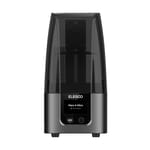

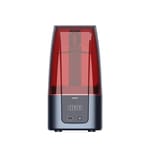
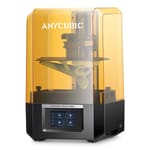
If you’re at all interested in desktop resin 3D printing, there’s a nauseating variety of machines on offer. Among the ocean of orange bucket lids and goofy names, boundaries for resolution are being pushed, and, finally, usability, too, with beginner-friendly features and perks that make 3D printing more reliable and cleaner.
But which printers are worth throwing down with? Keep reading, and we’ll tell all.
Handily, there are no special considerations for printers of this size class, apart from, of course, don’t be big. For what we consider to be small – up to about 8 inches on the diagonal across the build area – our primary concerns are more on the general usage side of things: how easy is it to level the print plate and how quickly it can print. Not to mention the software experience and support offered by the manufacturer, plus your general interactions with the printer. These machines generally avoid the cumbersome, oversized print plates and splash-prone resin vats that mid- and large-format printers are burdened by.
With so little to the category to hone in on as essential characteristics of a small resin 3D printer, we’re carving a path right down the middle. Our picks are the best all-rounder, budget, and fanciest options for this size class of resin 3D printer. While the top pick presents what we think is the best bang for your buck right now, the budget pick makes some small concessions without compromising what is otherwise a great 3D printer. If budget is less of your concern, then the upgrade pick is the machine that offers something the others can’t, often at a premium that disqualifies it from being an accessible top pick.
One final note – if machine dimensions aren’t really your concern, then consider a mid-size resin 3D printer instead. The printers aren’t all that much bigger but offer more versatile build volumes, comparable resolution (sometimes better, even) and are generally the newer, more feature-packed machines in 2023. Check out our guide to the best mid-size resin 3D printers for what’s hot.
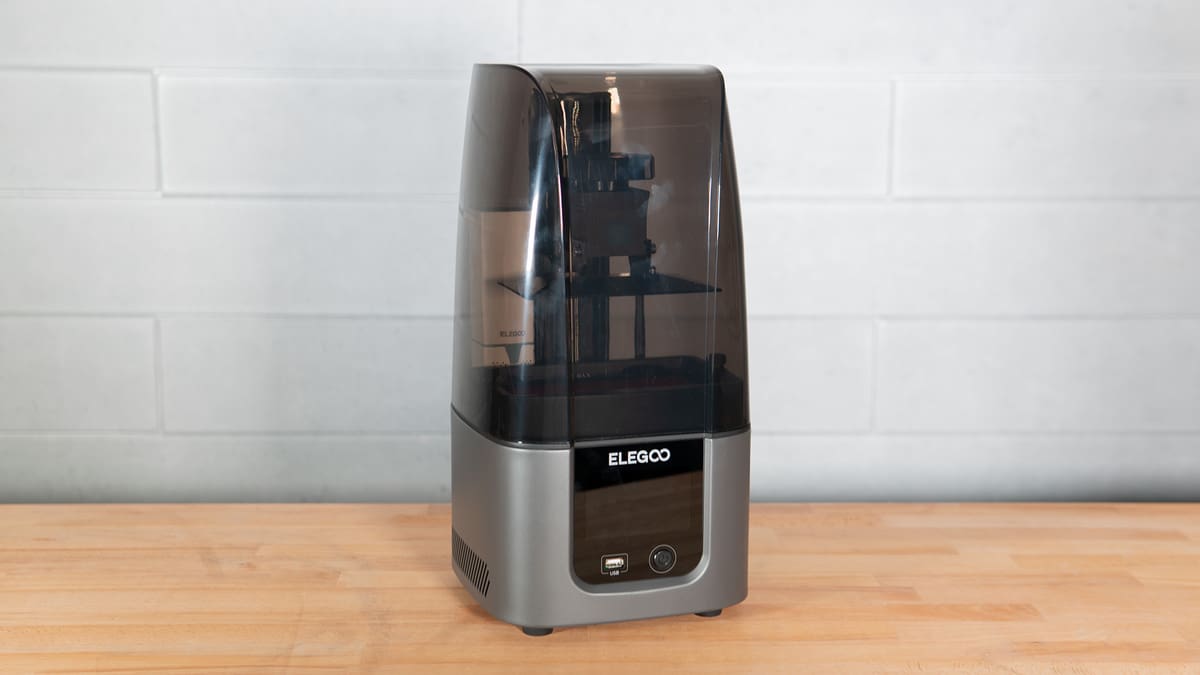
Bucking the trend of mid-size printers getting better features and resolution these days, the Elegoo Mars 4 Ultra is a bolt from the blue boasting one of, if not the highest resolution LCDs going in desktop resin 3D printing. It’s the best Mars series 3D printer to date, introducing a discerning pixel count that could see your models with voxels as fine as 18 microns in the X and Y- axes, resin and conditions dependent, of course.
Backing up the jump to such pixelatious new heights is a jump to a new OS for the printer. Based on Linux and exclusive to Elegoo’s new Ultra designation of printer, this new system layers in smarter features such as printer self-checks, richer print diagnostics, and the ability to adjust more print settings mid-print, a feature we’re always appreciative of due to it preventing the need for repetitive reslicing whenever a model doesn’t quite cure right. It seems that it’s early days for some of the features, though – despite a Wi-Fi connection and a menu option to check for updates, over-the-air updating (a standard for many printers) is conspicuously absent here.
Minor gripes aside, it’s the typical workhorse performance we expect of Elegoo’s Mars series, but better.
One notable distinction between the Ultra and non-Ultra Mars printers is the print plate fixture. The Mars 4 Ultra uses a four-point machine screw style, unlike older Mars’ typical single-screw ball joint. This is, no doubt, for stability over the long term, avoiding the need to relevel later. We miss the convenience afforded by the single screw-actuated ball joint, but the reasoning is clear.
Print performance is characteristically terrific, although the legwork typically required to dial in settings is still required here. There are no new systems or magic tools to make printing easier. It’s the same old tool, just a little sharper. And for ~$300, we absolutely do not mind. Elegoo has found some secret sauce to make their machines affordable, with older (but still excellent) printers now dirt cheap and the new flagships at uber-competitive price points like this.

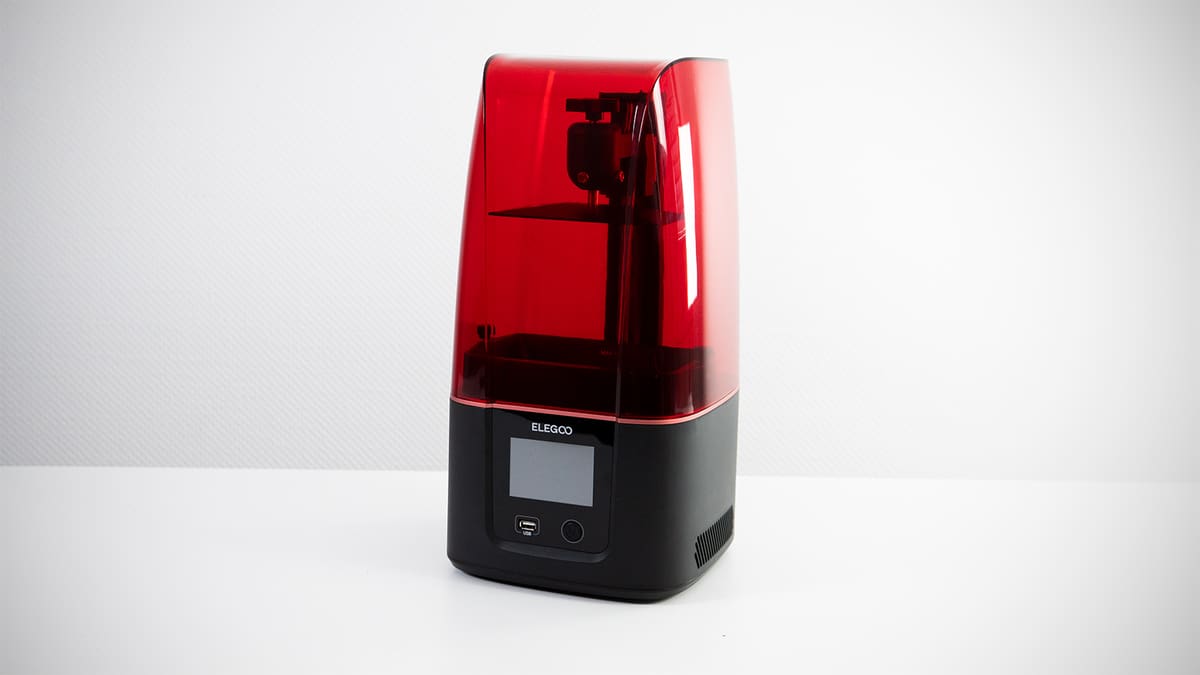
It may not be Elegoo’s most current iteration of the Mars 3D printer, but the Mars 3 remains terrific value for money, with an ever-decreasing price tag that flatters its workhorse-like performance. It just works with no fuss. Besides being one of the slickest-looking Mars printers, it also made some significant steps forward in usability and performance. With its 143 x 90 x 165 mm build volume, it’s pretty big for a small resin 3D printer, and, in packing 4098 x 2560 pixels, it can print at a very fine resolution of 35 microns.
For high light uniformity across the build area, the Mars 3 uses a powerful COB (Chip On Board) light source consisting of 36 LEDs stowed away underneath its monochrome LCD. Depending on your resin and conditions, this generally means fast cure times of up to 1.5 seconds per layer.
The Mars 3 is flush with small, user-friendly features, including a 3.5-inch color touchscreen that sits stylishly flush with the front of the machine. The USB port for reading print jobs is easily accessible, and the resin vat is all-metal with tidy thumbscrews to fix it in place and feet on the bottom to keep the delicate FEP from making contact with your workbench. Overall, it’s a friendlier design than many others in this size class.
With its price tag dropping lower and lower to accommodate newer releases – currently $145 – the Mars 3 is an essential, basic resin 3D printer that remains capable and doesn’t disappoint. Grab a screen protector for it, though. Many resin printers come with smartphone-style adhesive plastic sheets to protect the LCD mask – the Mars 3 does not.
An oldie but a goldie.

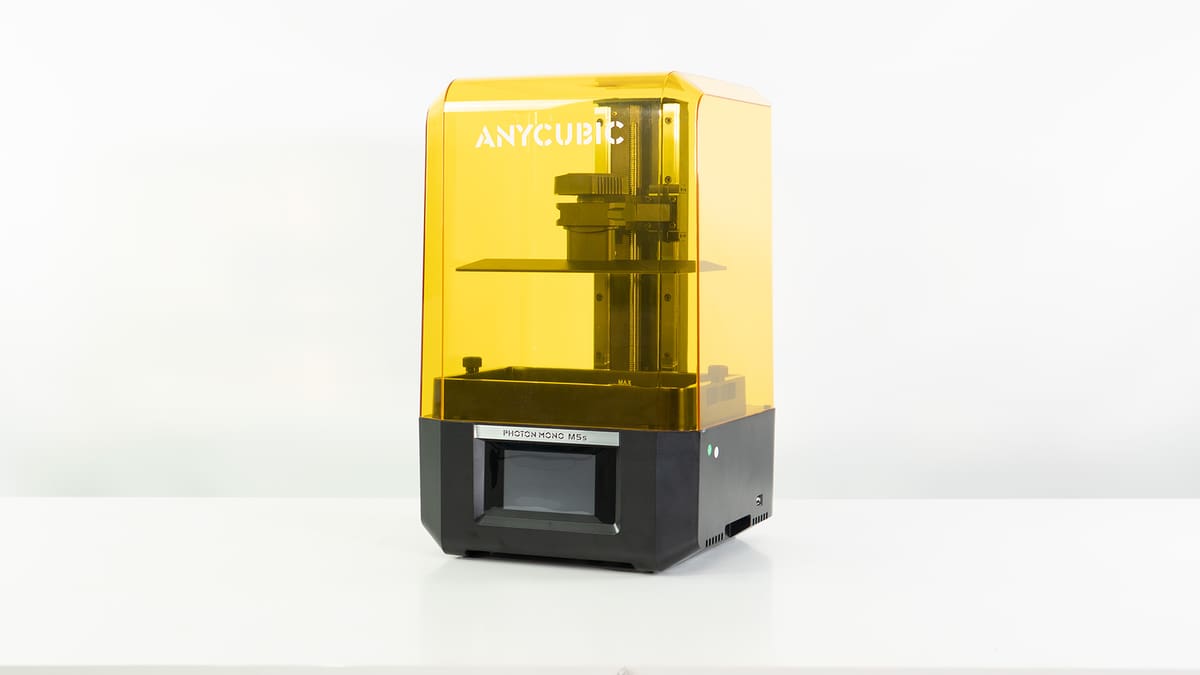
We struggled to think of any small desktop resin 3D printers that presented any kind of upgrade on the Mars 4 Ultra. Certainly, its resolution and feature set easily supersede the Phrozen Sonic Mini 8K that previously occupied our Upgrade Pick spot.
With this in mind, we’re slightly bending the rules to allow a compact, mid-size resin printer into the list. The Anycubic Photon Mono M5s uses a 10.1-inch mono LCD to beam layers into a 200 x 123 x 218 mm build volume, which falls outside our “small resin 3D printer” bounds. But considering the jump in build volume and feature set it offers within what is unquestionably a smaller footprint for a mid-size machine, it is quite the upgrade. We’ll make the exception just this once. Until the next time, that is.
The Photon Mono M5s is something of a different breed of desktop resin printer, introducing print-boosting smarts – the likes of which we’ve only really seen in filament 3D printing over the last couple of years. Packing a print-plate gantry-mounted sensor, the M5s can detect peel force, resin level, and the vat bottom to effectively automate and augment your printing experience.
In testing, we didn’t find it to be flawless, but that this system pulls off even half of what it does makes the M5s a preferred choice of ours over other desktop 3D printers we’ve experienced recently.
The M5s is ready to go right out of the box, running a short list of self-checks before letting you rattle off prints at its heightened print speeds. Note that the super duper speeds marketed by Anycubic are specific to a particular type of resin and layer height (which defeats the point). However, you can still print quickly with the Photon Mono M5s and “standard” resins.
The M5s packs a 12K 10.1-inch masking LCD with tiny pixels for super-fine print resolution. It’s only just beaten out by the Mars 4 Ultra, but at such a minimal difference, you’d be unable to tell them apart.
The usability of the M5s is higher than that of similar systems, too. Anycubic has gotten the Wi-Fi connectivity of the printer to sing, with a seamless link between the company’s software and hardware. You can also keep tabs on things using the company’s surprisingly slick mobile app, which gives you diagnostics of the printer, guides, tips, and a community aspect with models you can pipe to the printer at the click of a button.
It’s a quick and compact printer with layers of features that other printers fail to pull off – one for prioritizing convenience that, if you’re interested in a smaller resin 3D printer, is appreciably efficient with its footprint.

It seems to us that there aren’t too many new printers that fit into this size class. Of those that do, they’re focused squarely on being the cheapest they can be.
Phrozen dropped a Sonic Mini 8K variant in the Sonic Mini 8K S in early summer 2023. Keeping the LCD size and resolution the same but exchanging dual linear rails for a single. The result is a lightweight, plasticky analog that couldn’t sway us from the beefier Sonic Mini 8K, even with a price tag of $349. Extra features might’ve sweetened the deal, but we feel it’s still too pricey for a “cheap” version of a printer that only specialists will benefit from.
Around the same time, Anycubic released the Anycubic Photon Mono 2, a teeny tiny, surprisingly footprint-efficient, “4K+” (whatever that means) resin 3D printer that is very pleasant to use. Reliable performance and great print results for just $199 make it a pretty tidy package. We like it a lot. Nothing particular about it makes it easier for beginners, though, despite what the company would like you to believe. It has a tiny, poky touchscreen, an awkwardly placed USB port, and is so light it’d tip over if you so much as sneezed at it.
We’ve gone hands-on with the Mars 4 Ultra, which we liked enough to gong here and in other guides. We’ve yet to try the plethora of other Mars 4 series machines, though.
Whenever we update this article, we’ll drop some notes here to explain what has changed. New printers, recommendation changes – the lot.
Update – October 30, 2023: Despite being told it wouldn’t be, the Creality Halot One Plus is discontinued (thanks, Creality) and so it drops off our list. Thankfully, we’ve been testing the Elegoo Mars 4 Ultra in recent weeks, and it’s an unbelievably priced high-resolution powerhouse. In light of the Mars 4 Ultra’s performance and value, there are no small resin printers to recommend over it, and so our Upgrade Pick casts the net a little wider with our favorite mid-size resin printer (which also happens to be the most compact mid-size resin printer, too) putting in an appearance.
First publication – July 05, 2023: This is our first version of this guide. Updates will follow.
If there’s one thing that testing a lot of 3D printers has taught us, it’s that maintaining a broad benchmarking scheme for 3D printers is impractical for getting a sense of what a 3D printer is like to use and live with. Holding a sub-$200 self-assembled printer for hobbyists to the standard of a $6,000 production machine designed to handle engineering-grade materials won’t tell you that the former is a breeze to set up and the latter a tangled web of firmware updates, buggy systems, and unreliable performance.
We want our reviews and buyer’s guides to cut straight to the chase. What is it like to use a printer? What are the defining features like? What didn’t we like? And, more importantly, is it worth the money? We don’t want to get bogged down benchmarking numbers out of context or hung up on issues affected by more variables than we can control.
Our buyer’s guides and reviews take the intended end user of a 3D printer into consideration. We imagine what they’re likely to do with it and focus the testing on challenging this. If we have a large-volume printer, for example, we’ll be printing – surprise, surprise – large prints, making use of the entire bed, and checking the performance at the limits of Z-height.
Other points of consideration for what makes the best 3D printer include ease of use, supporting software, and repair options. If something goes wrong, how easy is it to fix the machine? Does the documentation or customer service provide adequate information?
We strive to answer all these questions and more in our quest to find the best 3D printer for you.
Trust is important to All3DP, so our product testing policy is strict. When sourcing test units from a manufacturer, we do so under a zero guarantees policy. We make no guarantee of coverage in exchange for the printer, and the first time a manufacturer sees what we think is when we publish the content.
If a manufacturer doesn’t reclaim the unit after testing is complete, it is donated to a local cause or goes into deep storage for responsible disposal later. We occasionally buy machines for testing, too. In such cases, machines purchased by All3DP either remain in the office for team usage or are donated or disposed of in the manner described above.
Manufacturers or benefactors donating units for review do not influence the outcome or content of the reviews we produce. To the best of our ability, we will investigate abnormal issues with the manufacturer to glean better context or get insight into their awareness of the problem. But we make no excuses for poor design or bad QA.
One method we use to monetize our content at no additional cost to the reader is through affiliate product links. If you click on a shopping link featured in our buyer’s guides and reviews, we may receive a small commission from the store when you make a purchase. This is at no additional cost to you. For more meaty content policy details, we cover it all in the advertising and commercial activities section of our terms of use.
For most readers, our top recommended 3D printers are your best bet in a given category.
But, facing the fact that there is no one-size-fits-all solution to home 3D printing, we’re here to help. Here are some pointers to orient you in this terminologically dense but wonderful world. (A word on terminology, we have a handy glossary of terms to know at to bottom of this article.)
Many 3D printers pitched for “beginners” or children go to such lengths to baby the user that they quickly become claustrophobic experiences. You will encounter more limitations than possibilities as your experience grows. If you aren’t satisfied with a “beginner” 3D printer’s features, we’d recommend a budget pick instead. You’ll save a little money, and the opportunity to learn by doing is far greater. And if something goes wrong, there are giant tribes online for each printer that have already asked and answered every question under the sun.
While the general quality of budget 3D printers has dramatically improved in recent years, quality control is often lacking. While manufacturers with large user bases are adapting to meet the demands of their newfound fans, including better customer support, there are usually better wells of knowledge to be found in the owners themselves, who contribute to the vast forum knowledge bases for some 3D printers.
We have zero obligation to manufacturers to sugarcoat what we find, and the first time they read it is when you do too. That’s why you can trust our reviews. We don’t pander to anyone, and our experience with the printer is what you read on the page.
If you can’t find any information about a printer you’d like to know more about, let us know at editors@all3dp.com.
A 3D printer for the home is rarely ever a one-and-done investment. Besides the continual purchase of materials, maintenance costs on perishable printer parts can stack up – think nozzles on an FDM printer or FEP film on an MSLA machine. Of course, parts can wear down or break, too, meaning sourcing replacement parts is a sensible consideration if you plan to print long-term. Printers with roots in the RepRap movement and open-source designs will be easiest to source parts for, with off-the-shelf components part and parcel of the design ethos behind them. Enclosed-design printers aimed at beginners may offer the gentlest introduction to printing, but your options to source spare parts will often be limited to the manufacturer. That’s if you can even get to and diagnose the problem.
The thrill of a new hobby will only sustain you so far. Being the desktopification of an otherwise complicated manufacturing process, expect to encounter, sooner or later, problems with a home 3D printer – even the occasional show-stopping issue. Having an end goal in mind for your printing gives you purpose and a reason to learn the solutions to the problems. Printing simply because it looks cool will result in a small mountain of useless doodads and, eventually, disinterest at the hands of cost, frustration, and the buildup of useless plastic trash.
Most home 3D printers are single extrusion fused deposition modeling machines, meaning a single printable material extruded through a single nozzle. Versatile enough for many applications through material compatibility, they’re safe machines to start with. But if you know you need to print objects with challenging geometries or semi-enclosed volumes, a dual extrusion printer would make your printing far easier. Likewise, single objects that need to have different material properties will only be achievable with dual extrusion. A resin printer will be the way to go for high-detail miniatures. Understand the technologies to find a printer that best suits your needs.
While the size of FDM 3D printers can vary greatly, the spillover is small. You’ll get some emissions from the filament melting, cloying the air, making it inadvisable to spend prolonged periods nearby. Generally speaking, the cleanup is minor and relatively easy to contain, depending on the models you print.
Resin 3D printing, however, is dramatically different and has unique demands that should make you think twice before investing. To varying degrees, the resin is smelly and toxic to you and the environment. It requires dedicated cleanup stations and personal protective equipment. You typically need 95 %+ isopropanol to clean prints and dissolve uncured resin from surfaces.
All printers should be operated in well-ventilated spaces, but this applies doubly to resin 3D printers.
While many excellent 3D printers have gotten their big break on Kickstarter, there’s the unavoidable issue that the platform is not a store. You are not buying a printer when you commit money to a campaign on Kickstarter; you are backing a vision. It’s putting money into the pot to help a company or person trying to achieve something.
You get nothing in return if a project is grossly mishandled and the money disappears. Often what you do get is the beta version of the product. You are paying for early access and all the wrinkles across all stages of the product that come with it.
We’re seeing more big-name companies turning to Kickstarter than ever to launch their products – it’s a safe way for them to gauge demand and drum up some interest against the pressure of a ticking countdown. Despite many companies being capable of outright launching products, they go cap-in-hand to enthusiasts with the promise of shiny new tech. Don’t be that user unless you absolutely must be the first to use a product and have money you can afford to lose.
We don’t think it’s worth the risk, but in the interest of cool new tech, report on new campaigns with our news coverage. You will never see a Kickstarter 3D printer in our buyer’s guides unless it has completed its campaign and the printer is widely available at retail, with all the protections that come with buying from a store.
But where’s the UltiMaker? Or Formlabs? What about Raise3D? Desktop Metal?
In the past, we’d list the best professional 3D printers alongside what we consider consumer or hobby-oriented machines (the printers we mainly focus on). An apples and oranges comparison, we know.
With this in mind, we created All3DP Pro, a wing of our content exclusively covering the professional applications of 3D printing and additive manufacturing solutions. Here’s a selection of articles covering the best 3D printers for professional use to get you started.
Choosing the best 3D printer is tricky, not least because the terminology surrounding 3D printing is dense. Here are some need-to-know terms, their explanations, and useful links to help you on your way to 3D printing mastery.
FDM: Fused deposition modeling, otherwise known as FDM, is a 3D printing process that extrudes heated thermoplastic material through a moving nozzle to build an object layer by layer. FDM is a trademarked term, which led to the RepRap open-source movement to coin the alternative phrase “fused filament fabrication” (FFF), but the two are interchangeable.
Filament: Filament is the base material used to 3D print objects via FDM. The filament is typically a solid thermoplastic fed to a print head, heated to its melting point, and extruded through a small nozzle. Filament is commonly available in spools of either 1.75 mm, 2.85 mm, or 3 mm diameter widths – dimensions that dictate the printers that can use them.
G-Code: G-code is the machine language used to instruct computerized tools such as 3D printers. Giving coordinates and instructions for tool heads and other non-movement functions, it is almost exclusively generated by slicing software. It comprises a library of commands to control specific actions like motion, speed, rotation, depth, and other related switches and sensors used in a machine’s operation. You can get to grips with G-code in no time with our guide to G-code commands.
Heated bed: This is a build plate that is heated so that the few layers of extruded plastic are prevented from cooling too quickly and then warping. A heated bed is essential for working with ABS or PETG materials but not so much with PLA.
Hot end: This is the cluster of components that heat and melt the plastic for deposition through the nozzle.
Extruder: Used by some to describe the entire system of parts that pushes and melts filament, extruder can also refer specifically to the motor and accompanying gears that grip the filament, feeding it to the hot end. How the extruder is arranged can affect the printer and its capabilities. There are two common arrangements: Bowden and direct. It’s a messy subject with overlapping terms and technical explanations; our guide to 3D printer extruders gives you all the knowledge to make sense of it.
Bowden: A style of extruder that sees the extruder motor positioned away from the hot end – typically the structural frame of the printer or on one end of the X-axis gantry. So-called for the Bowden cable and its action of allowing a wire to move freely within tightly constraining tubing, the Bowden extruder feeds filament through a PTFE tube directly into the hot end.
Direct Extruder: The other commonly seen extruder type, a direct extruder sees the extruder motor and associated feeding mechanism mounted directly to the hot end, with barely any distance between the feed and the melt zone of the hot end.
Dual Extrusion: Some 3D printers carry two extruders/hot ends, allowing them to incorporate multiple colors or materials into the same print job. While the obvious appeal comes from the possibility for decorative two-tone prints, the real benefit of dual extrusion systems is combining different materials, such as dissolvable support material, to enable the printing of otherwise impossible geometries. It’s a deep topic worth exploring more in our guide to all you need to know about dual extrusion.
PLA: Polylactic Acid, otherwise known as PLA, is a thermoplastic commonly used as a material for printing with FDM 3D printers. It’s easy to work with and is available in many colors and finishes. PLA is somewhat brittle – don’t expect to print strong items with it – but it remains popular for decorative printing thanks to its low cost. You can learn more about PLA in our guide dedicated to the topic.
SLA: Stereolithography is a 3D printing technology that falls under the broader process of vat photopolymerization. The term is often (incorrectly) used to describe all methods of vat polymerization – really, it’s a particular technology that uses a directed laser beam to trace layers into a vat of liquid photopolymer resin. Alongside SLA, other technologies are considered vat polymerization.
Resin: The material used in desktop SLA, DLP, and LCD (MSLA) 3D printers. A blend of chemicals that includes a photoinitiator, resin solidifies under ultraviolet light. Highly toxic and difficult to clean up after a spill, care, attention, and personal protective equipment are musts when working with resin. It is an unpleasant material, and wastage must be disposed of in accordance with local laws. Despite all the warnings, it’s the only way to go for intricate detail.
LCD 3D Printer: A common term for resin 3D printers that use an LCD as a layer mask over UV light. The de facto standard in inexpensive resin 3D printers, the technology is cheap and widely used. The LCD panels are consumable, though, with monochrome LCDs typically having lifespans in the low 1,000s of hours.
MSLA: Mask stereolithography (MSLA) is a term coined by Structo but popularized by Prusa Research. It refers to, basically, the LCD 3D printer as described above.
Micron: One-thousandth of a millimeter. This unit of measurement is commonly used in 3D printing as a value to indicate accuracy, resolution, or surface finish.
Slicer: 3D printing works by building an object layer by layer. A slicer is a program that divides a 3D model into flat layers and generates the machine code for the printer to trace out said layers. The output of a slicer for FDM 3D printers is typically G-code, which gives instructions and coordinates for the printer to execute. Our deep dive explaining what exactly a slicer is gives good foundational knowledge. Many popular slicers are free and open source. Others are proprietary and machine-specific. It’s an essential tool for successful 3D printing.
STL: STL is the most popular file format for 3D printing. Developed by 3D Systems in the ’80s, the STL file type only contains the surface geometry of a 3D object. Despite industry efforts to move onto more efficient and data-rich formats such as 3mf, STL endures and is the most commonly found 3D model file type on popular 3D model file repositories. We explain in more detail in our guide to what exactly STL is.
Open Source: The term given to a product, typically software, but also applicable to hardware that is freely open for others to modify and redistribute according to their needs. In 3D printing, this is often in the spirit that individuals are free to modify, improve, and share changes to the source material for others to test, iterate, and reciprocate. Open source licenses govern the fair and correct usage of open source works, giving terms and conditions that ensure the freedom of access to the creation and any derivatives.
RepRap: A project started in 2005 by Dr. Adrian Bowyer, a mechanical engineering lecturer at the University of Bath. Created to develop a replicating rapid prototype, a low-cost machine capable of printing replacement parts for itself or other new machines. The vast majority of desktop 3D printers stem from the work laid down by the RepRap project. We have a fascinating alternative RepRap Wiki page on the topic if you want to dig deeper.
License: The text of "The Best Small Resin 3D Printers" by All3DP is licensed under a Creative Commons Attribution 4.0 International License.
CERTAIN CONTENT THAT APPEARS ON THIS SITE COMES FROM AMAZON. THIS CONTENT IS PROVIDED ‘AS IS’ AND IS SUBJECT TO CHANGE OR REMOVAL AT ANY TIME.